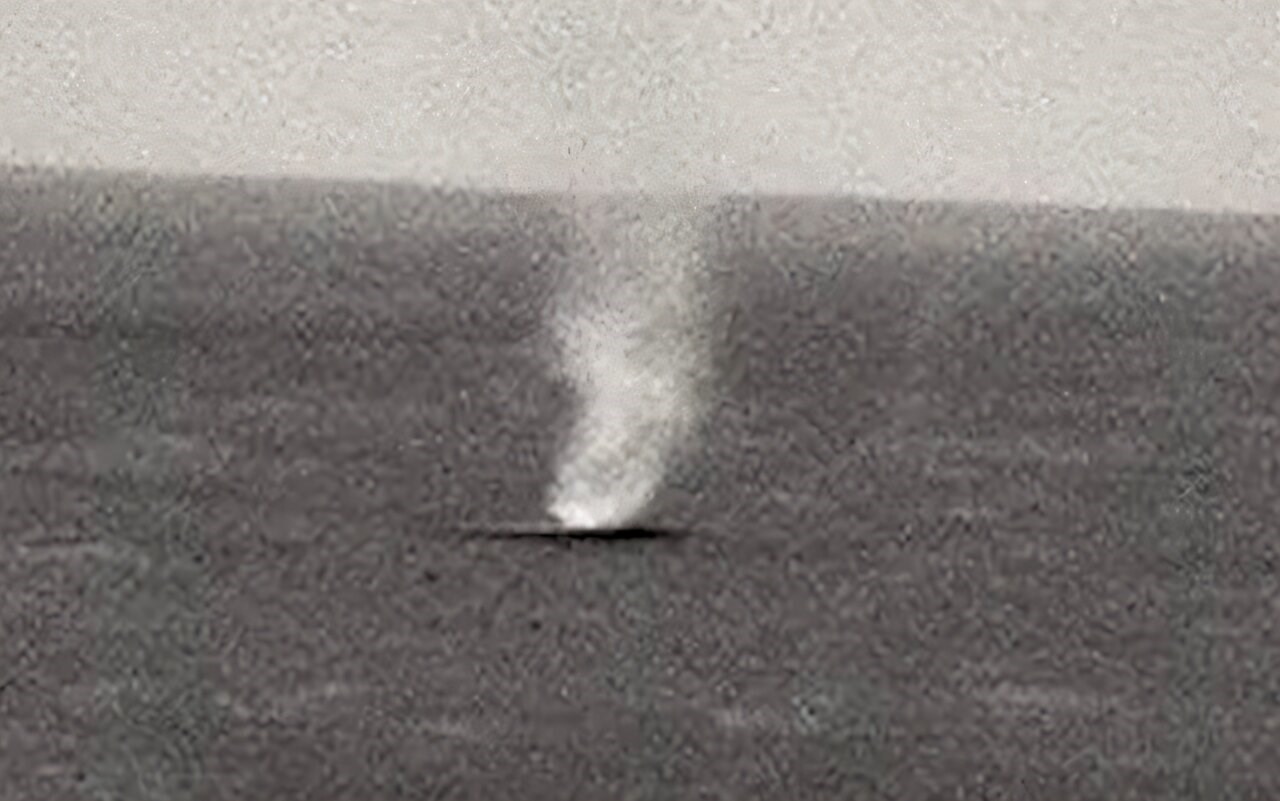

NASA’s Mars rover Perseverance has documented a captivating phenomenon that reveals some of the complex atmospheric dynamics on the Red Planet. The rover observed a dust devil—a type of Martian tornado—engulfing a smaller one in a dramatic encounter.
This extraordinary event was recorded on January 25 at an area known as “Witch Hazel Hill,” situated on the western edge of Jezero Crater. From a distance of approximately 1 kilometer, Perseverance captured images of a towering dust devil, about 65 meters in diameter, overtaking and absorbing a smaller whirlwind, measuring roughly 5 meters across. In the background, two additional dust devils can be discerned.
Mark Lemmon, a scientist working with Perseverance, explained, “Convective vortices, or dust devils, can be quite diabolical. These mini-vortices travel across the Martian surface, lifting dust and reducing visibility in their path. When two dust devils meet, they may either annihilate each other or combine, with the stronger one consuming the weaker.”
Dust devils, which also occur on Earth and are locally called dalaz or dalas, form when warm air rises and interacts with cooler air layers. Scientists view these phenomena as valuable indicators of atmospheric conditions, offering insights into wind patterns and speeds. They are believed to contribute to about half of the dust present in Mars’ atmosphere.

The observation of dust devils on Mars dates back to the 1970s when NASA’s Viking satellites first captured them. The 1997 Pathfinder mission marked the initial surface observation, with a dust devil passing directly over the lander. Subsequent missions by rovers like Spirit and Opportunity continued these observations.
Today, Perseverance, along with the Curiosity rover in Gale Crater, frequently documents these Martian weather events. Since landing in 2021, Perseverance has recorded numerous dust devil occurrences. Notably, on September 27, 2021, the rover’s SuperCam microphone captured the sound of a Martian cyclone during its passage over Jezero Crater’s floor.
Monitoring these phenomena is challenging due to their unpredictable nature. Perseverance must maintain constant vigilance, as these small cyclones typically last no more than 10 minutes.
ENGLİSH
5 gün önceSİGORTA
5 gün önceSİGORTA
5 gün önceSİGORTA
8 gün önceSİGORTA
10 gün önceSİGORTA
10 gün önceDÜNYA
19 gün önce 1
Elon Musk’s Father: “Admiring Putin is Only Natural”
11558 kez okundu
1
Elon Musk’s Father: “Admiring Putin is Only Natural”
11558 kez okundu
 2
xAI’s Grok Chatbot Introduces Memory Feature to Rival ChatGPT and Google Gemini
10582 kez okundu
2
xAI’s Grok Chatbot Introduces Memory Feature to Rival ChatGPT and Google Gemini
10582 kez okundu
 3
Minnesota’s Proposed Lifeline Auto Insurance Program
9474 kez okundu
3
Minnesota’s Proposed Lifeline Auto Insurance Program
9474 kez okundu
 4
Introducing Vivo Y300 Pro+: A Blend of Power and Affordability
7412 kez okundu
4
Introducing Vivo Y300 Pro+: A Blend of Power and Affordability
7412 kez okundu
 5
What’s the best car insurance for seniors?
6069 kez okundu
5
What’s the best car insurance for seniors?
6069 kez okundu
Veri politikasındaki amaçlarla sınırlı ve mevzuata uygun şekilde çerez konumlandırmaktayız. Detaylar için veri politikamızı inceleyebilirsiniz.